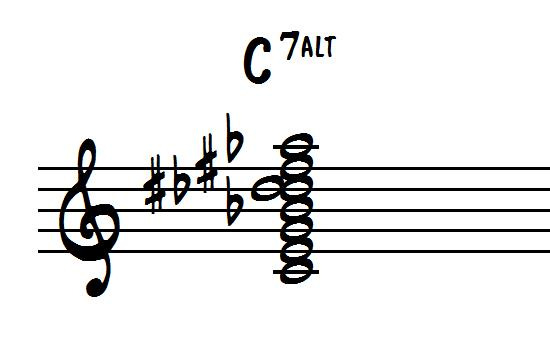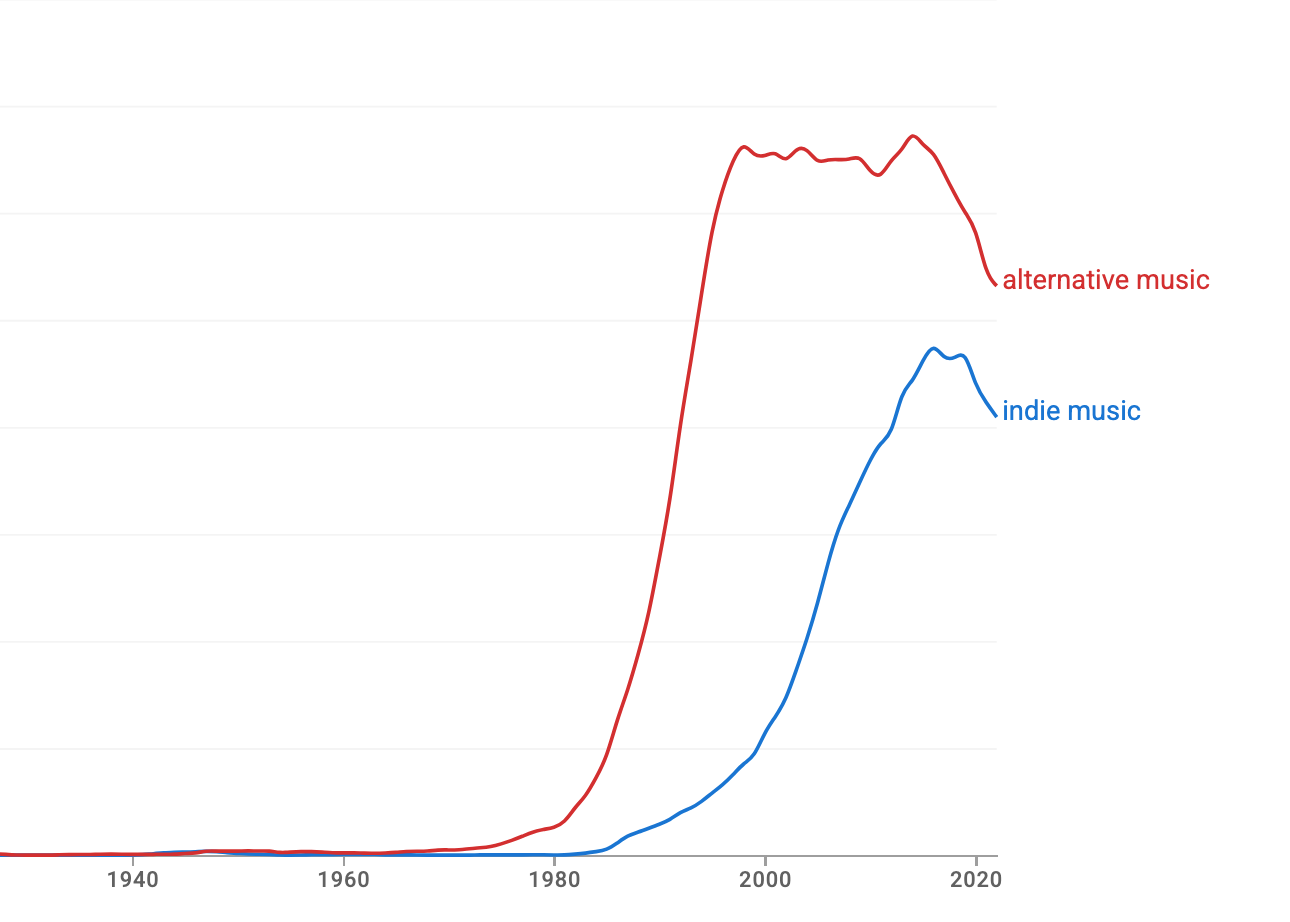Indie Culture Is Great—But What's Coming Next is Better
Things are about to change, and this is how it will happen
When I first heard the term indie music, I had no idea what it meant. At first glance, it seemed to involve tattoos, piercings, and hair colors not derived from any human DNA strands.
But I was wrong.
Please support my work by taking out a premium subscription—for just $6 per month (even less if you sign up for a year).
The word indie served as short hand for independence. And like those rebels who made a declaration under that rubric back in 1776, these uprising indie artists were rejecting all shackles and limitations.
It wasn’t just hair color. In the indie world, everything was now up for grabs.
Sometimes they called it alternative music—or just alt music. But the idea was the same. Conformity is over. Freedom is our future.
That’s a lovely vibe. But I still had no idea what an indie or alt song sounded like. The only alts I know about in music are alt chords—and the major labels outlawed those years ago.
So this alt music must be something different. But I could never quite define it.
Maybe that was the idea. When you declare independence from the plastic people running the show, you no longer need to follow any formula.
That lack of definition didn’t hurt indie artists and indie labels. For a few years, they were the hottest things in music.
And then it all stopped.
Judging by this chart of word usage, indie and alt music took off in the 1980s, and started declining sharply around 2013. By pure coincidence—or maybe not—that was the same year Spotify expanded into 55 countries.
But it wasn’t just music that lost its independence. The same thing happened in movies, media, and every other sphere of creative expression.
“We need something stronger than indie. And it’s starting to come to life.”
Huge digital platforms and devices promoted a culture of conformity. That was intentional. You can’t build a scalable global quasi-monopoly unless you get all the people on the same app—following the same rules and getting managed by the same algorithms.
The goal after 2015 wasn’t going indie. It was going viral. And by definition, virality is only achieved when everybody consumes the same memes and culture products.
Here’s the word usage chart on going viral:
I note that a pesky virus might have contributed to this. So let’s look at other markers of culture conformity—namely influencing and memes.
These charts capture a world of pain in just a few images. They show a shift from declaring independence to following the crowd.
Even worse, the dominance of the meme platforms has destroyed most of the creative ecosystem. Everything feels tired and exhausted in this new culture of regurgitation.
That’s not just my opinion. It’s a reality—measured out in the collapsing stock prices of companies that once set the tone for our leisure time. Disney stock is down 40%. Nike stock is down 60%. Warner Bros Discovery has collapsed more than 80%.
Even companies that once championed indie values have lost their mojo. Do you remember when Apple told everybody to Think Different? It’s hard to believe, but that once seemed like a plausible motto for Silicon Valley.
Not anymore.
Nowadays Apple is using the catchphrase “Built for Apple Intelligence.”
That sounds ominous—like something a surveillance organization might boast. What a change for a company whose greatest marketing moment was a TV commercial defying Orwellian conformity.
It’s no coincidence that Apple ran that commercial at the same moment that indie and alt music was taking off.
I am sorry to report that both of those revolutions—in tech and the arts—failed. We now live increasingly in digital encampments, almost prison-like in their desire to manipulate and control. Artists are like serfs working on content farms for the benefit of feudal lords in Palo Alto.
But there is a glimmer of hope….
I mourn the loss of indie culture. And I have worked hard to bring it back. If you read The Honest Broker with any regularity, you know how much I celebrate alternative voices and platforms.
You can support my work by taking out a premium subscription.
But just bringing back the old indie vibe isn’t enough—or might not even be possible. That’s because there’s not much independence in the surviving indie business models.
Here’s how Taylor Lewis and Ellis J. Sutton describe the problem. They are talking about indie movies, but what they say applies to most spheres of creative work:
“Indie” has become a hollow title: one that still plays by the rules of a broken game
So they make a defiant decision:
We’re not calling it “independent film” anymore, because that name belongs to a system that’s collapsing under its own crushing weight: underfunded, over-leveraged, and barely surviving in the shadows of legacy distributors and streaming algorithms.
So what do we do?
We need something stronger than indie. And it’s starting to come to life.
Some people call it NonDē. Or you might describe it as indie on steroids. I like to think that it’s the next big thing.
Ted Hope, the most ardent champion for NonDē in the film world, has offered a long list of guiding principles. They focus on improving the “product, process, environment, and experience” for creative work.
I am in broad agreement with him. But I would highlight these five key building blocks for the next stage of indie or alt culture.
End the isolation of indie artists so that they can use their collective power in building economic opportunities and expanding creative possibilities.
Build collective platforms and alliances so that indie artists can support each other and benefit from the success of their peers.
Defend artists rights—to promote ownership of creative work by the creator and prevent the predatory practices of large corporations and tech content farms.
Create an ecosystem that encourages risk-taking, fresh perspectives, and work that defies tired formulas.
Support initiatives, organizations and new economic models that give artists more freedom and flexibility.
Here’s a graphic—feel free to share it widely.
That’s a beautiful vision. And it’s not just a dream. Each of these goals can be achieved.
We already have some platforms and tools at hand. Many of us are already using them. We need to support them, and build more.
I want to be part of this. I’m sure many of you do too—just the fact that you have stayed with me until this final paragraph tells me that it’s so. So let’s see what we can do together.








When they got us to call it content, we lost. It’s called music, painting, printing, sewing, sculpting, literature, dance, “the Arts”. Can’t whizz it all up in a blender and call it content—produces the creamed squash that babies fist into their mouths and smear all over the high chair. It’s time for creativity to be valued and rewarded. It’s possible.
Welcome to today’s music industry:
leaders follow, followers perform, and the algorithm plays the same five chords until we forget what feeling sounds like.